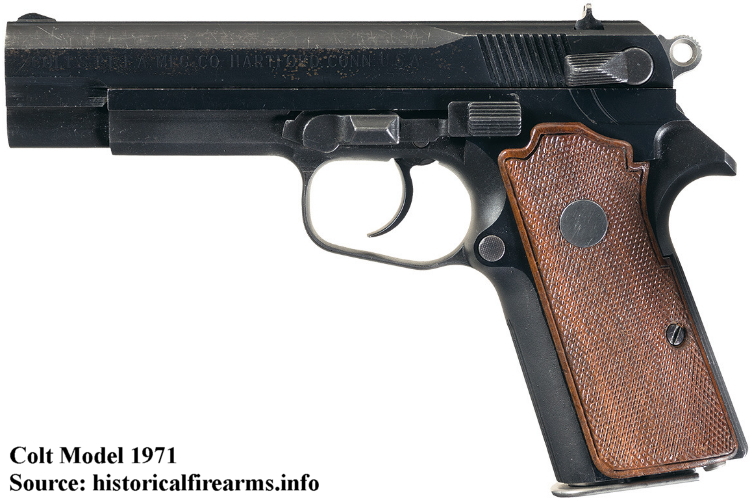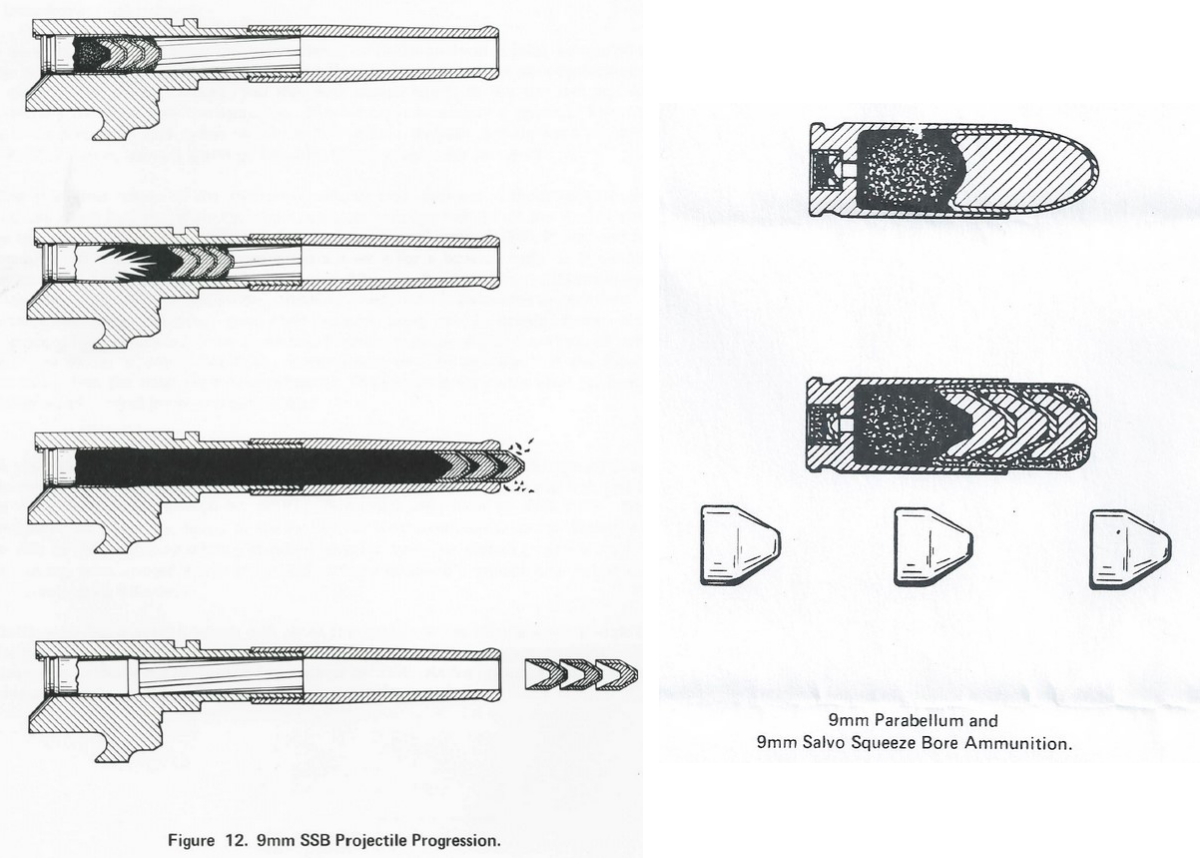The squeeze bore, multiple projectile cartridge system concept was developed by Russel Robinson in 1961 although the patent was only granted in 1969. This was called the Salvo Squeeze Bore system and was different from Project Salvo, which was run by the US Army. The principle sees the barrel taper towards the muzzle that would separate the projectiles, thereby creating a spread of bullets increasing firepower. Tests done with the M2 Browning on .50/30 calibre and a rate of fire of 500 rounds per minute multiplied that to 2,500 round per minute. A number of calibers were developed by Robinson and Colt, including .50/30, 7.62/.22 and 9mm/30 as well as .45/38 and 5.56mm. the bullets were encased in a polymer ‘sabot’ to ensure reliable feeding and the weapons had the front portion of the barrel removed and replaced by a smooth bore tapered section. Extensive tests were done with the .50/30 calibre on the M2 Browning in Vietnam, but with the war drawing to a close in the early 1970’s, the Army lost interest in the project as the need for such a weapon system were no longer required. The squeeze bore concept was also considered for the Colt M1971 which was a double stack, 15 shot 9mm or 38 Super and a 9-shot 45 ACP with the idea to incorporate this into the SSB project, thereby giving the shooter a 45-shot handgun. There was at that stage no interest, so the project was shelved. The M1971 concept was resurrected briefly as the Colt Stainless Steel Pistol (SSP), but during trials lost out to the Beretta M92. Israel expressed interest in the project at some stage, hence the existence of Israeli headstamps, but the SSB idea seemed to suffer a quiet death, and nothing further came from the project. (Erlmeier, Brandt Ref. 138B).














